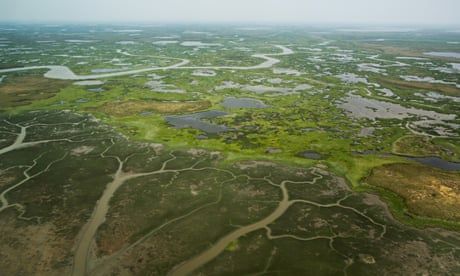
Critical CO2 stores held in permafrost are being released as the landscape changes with global heating, report shows
A third of the Arctic’s tundra, forests and wetlands have become a source of carbon emissions, a new study has found, as global heating ends thousands of years of carbon storage in parts of the frozen north.
For millennia, Arctic land ecosystems have acted as a deep-freeze for the planet’s carbon, holding vast amounts of potential emissions in the permafrost. But ecosystems in the region are increasingly becoming a contributor to global heating as they release more CO2 into the atmosphere with rising temperatures, a new study published in Nature Climate Change concluded.
Continue reading...